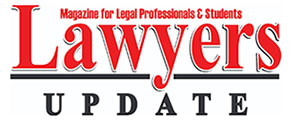The three judges Bench of the Supreme Court consisting Justice B.R Gavai, Justice P.S Narasimha and Justice Prashant Kumar Mishra, passed a slew of directions in relation the matter of Environment, Forest and Wildlife.
On January 31, 2024, in a Case of IN RE: T.N. GODHAVARMAN THIRUMULPAD (Petitioner) vs. UNION OF INDIA AND ORS. (Respondents), WRIT PETITION (CIVIL) NO. 202/1995, the Supreme Court issued the following guidelines.
It was stated that “the bodies, authorities, regulators, and executive offices entrusted with environmental duties must function with the following features”
1. The composition, qualifications, tenure, method of appointment and removal of the members of these authorities must be clearly laid down. Further, the appointments must be regularly made to ensure continuity and these bodies must be staffed with persons who have the requisite knowledge, technical expertise, and specialisation to ensure their efficient functioning.
2. The authorities and bodies must receive adequate funding and their finances must be certain and clear.
3. The mandate and role of each authority and body must be clearly demarcated so as to avoid overlap and duplication of work and the method for constructive coordination between institutions must be prescribed.
4. The authorities and bodies must notify and make available the rules, regulations, and other guidelines and make them accessible by providing them on the website, including in regional languages, to the extent possible. If the authority or body does not have the power to frame rules or regulations, it may issue comprehensive guidelines in a standardised form and notify them rather than office memoranda.
5. These bodies must clearly lay down the applicable rules and regulations in detail and the procedure for application, consideration, and grant of permissions, consent, and approvals.
6. The authorities and bodies must notify norms for public hearing, the process of decision-making, prescription of right to appeal, and timelines.
7. These bodies must prescribe the method of accountability by clearly indicating the allocation of duties and responsibilities of their officers.
8. There must be a regular and systematic audit of the functioning of these authorities.




